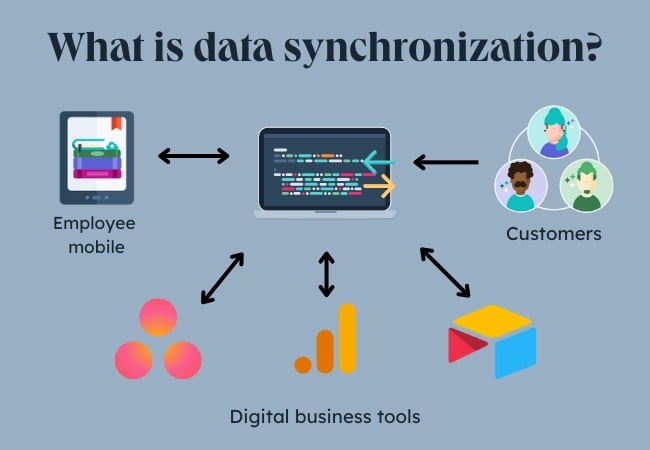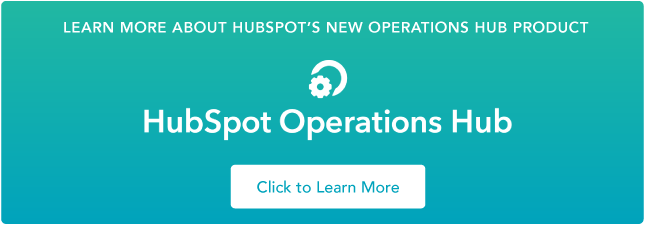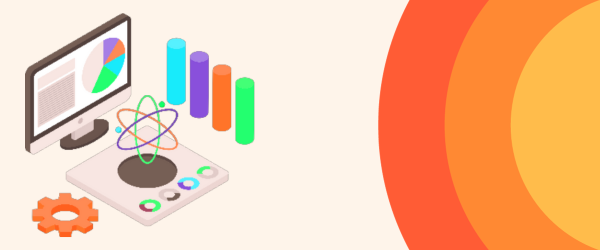Keep reading to learn more, or click one of the links below to jump to the information you’re looking for.
- What is data synchronization?
- Why is data synchronization important?
- How to Synchronize Data
- Data Synchronization Tools
Each business collects and handles data through dozens of different apps, and many companies work with over 200 software tools. With information coming in from so many sources, it's easy for databases to become disjointed and disorganized if they're not talking to one another.
When business data isn’t in sync, it can lead to all sorts of challenges, such as:
- Data silos
- Conflicting or duplicate data
- Low-quality or outdated data
- Excess data
- Collaboration and communication issues

Synchronized data means that you can have a clear view of all aspects of business intelligence. You can produce reliable and actionable reports, make informed decisions, communicate transparently, and align your departments toward common goals.
Data Synchronization vs. Data Integration
These two concepts are similar, but they're not synonymous. Data integration means combining two or more pieces of software so that they're working in tandem. Synchronization is a type of integration in which data stays consistent between two or more databases.
There are lots of different ways to achieve integration. But, unlike other integration processes, synchronization has the power to keep databases in continuous communication. The key word here is "keep", as it's an ongoing process between different tools.
In short, data synchronization is a type of integration, but not all integration processes result in a true sync of the data.
Data Synchronization vs. Data Replication
Data synchronization suggests that there are multiple copies of up-to-date data. Data replication suggests that there are two or more complete and identical copies of data. These terms both talk about sets of data, but focus on different qualities of the data set.
Like data integration, data synchronization can be a type of data replication, but not all data synchronizations are full replications of data.
One Way vs. Two-Way or Bi-directional Synchronization
Another important way to think about data synchronization is how it syncs. Most businesses use a range of digital tools every day, creating a massive amount of data.
Sometimes data will sync one way — usually within a tool or specific location. Examples of this include data sent to a data warehouse or within an application. One-way syncs are sometimes called data pushes.
So, if you automate data to go from your application to a desktop folder, the app can change the folder's data. But if you change data in the folder, it won't change the data within the app.
The other option is a two-way sync. This is also called bi-directional synchronization. For example, say you have two connected applications, like your Google and Outlook calendars. If you make a change to one calendar, it will update the other, and vice versa. This means that there is no single source file to view if something is accidentally changed or deleted.
Why is data synchronization important?
Data synchronization is essential to creating a consistent experience. Data impacts your customers, employees, and stakeholders. The insights you get from your customer data and more inform your sales goals, processes, and growth. Let’s talk about some specifics.
Keeping data secure.
Data is an asset. Proper data synchronization practices can protect data from corruption, keeping it more secure.
Maintaining data quality.
Manual data modification is a time-consuming and expensive process. Data synchronization helps businesses maintain a high level of data accuracy. At the same time, it also helps avoid errors and fix mistakes that can have major impacts.
Quality data management.
Quality data creates a strong foundation for consistent data management. Inaccurate data and frequent workarounds can create inconsistent reports.
To focus your strategy on data-driven insights, you need reliable information. Data synchronization instills trust in your data when making major decisions.
Data harmonization.
Data harmonization combines distinct data fields, formats, and more into a combined set of data. This makes it easier for businesses to analyze and visualize that data toward their goals.
A major challenge today for businesses is the accumulation of data from different sources. Companies work with many different tools at the same time. It can take extensive time and expertise to draw anything useful from that disconnected data.
But data synchronization can help businesses harmonize their different streams of data. It can make your business more secure, trustworthy, and effective.
How to Synchronize Data
So how exactly can your business achieve beautifully synced and organized databases? It's simpler than it sounds.
1. Use native integrations.
Native integrations are when you can directly integrate two applications you’re already using. This is usually done with application programming interfaces (APIs). Once integrated, data can flow between the two apps.
Native integrations can be great to automate certain workflows and serve a lot of common use cases. That said, they usually only work one way, and native integrations tend to be more in the data pushes category, not data syncs.
HubSpot customers: Operations Hub offers complete data synchronization.
2. Use custom integrations.
Custom integrations are software that is custom-built by your team for your specific needs.
Custom integrations can achieve true data sync, but building software to keep data in sync two ways and in real-time is tough. It can take a long time to build this, and it can be expensive.
3. Use a third-party integration platform or Integration Platform as a Service (iPaaS) provider.
iPaaS are third-party, cloud-based solutions that specialize in integrating business tools. These providers offer a range of automated tools that can help you connect different software. Their tools might include options for:
- Development
- Cloud-based processes
- Execution of integration flows
- Data governance
- Cloud services
- Applications
- Data management
There are a lot of different types of iPaaS tools, and not all of them are great for data synchronization. Those that do specialize in data syncing often sync different types of data, so they can be used together.
Read more: Benefits of iPaaS
4. Choose the right data synchronization solution for your business.
Now that you have a sense of your data synchronization solutions, it's time to create a clear strategy.
Start the process by answering these key questions:
- What type of data do you want to sync?
- What type of software applications do you want to integrate?
- How do you want your data to flow between your apps?
If you have a native integration within the applications you are using and it solves your operational challenge, go for it. That's the easiest, safest, and most intuitive way to sync data.
If you're not able to use a native integration or build a custom solution, you'll probably use an iPaaS. If so, keep in mind that different tools sync different types of data, support different categories of apps, and serve different use cases.
This means that you may want to use multiple tools side by side to create a fine-tuned, smooth-running technology ecosystem.
Read more: Software integration for beginners
As you choose the right solution for your business, don’t forget about historical data – the data created before you started synchronizing.
Most syncing tools can scan your databases in an initial sync and send data from one app into another to make sure they're both equal.
During this process, you need to understand whether you need to sync segments of your data in different ways. Multiple data pushes that work independently from one another can overlap or cancel each other out. But most data syncing tools will allow you to keep any app-specific segmentation data.
To streamline your choices, create a spreadsheet that can help you compare. Then, find the right tools for your systems and budget.
Data Synchronization Tools
Data Sync (HubSpot)
Best For: Native Data Synchronization

HubSpot data sync offers sync between HubSpot and other apps. For small businesses, this makes it easy to unite a range of data sources. This can streamline your analysis and decision-making processes for maximum growth.
Data Sync use cases include:
- Automatically associate contacts with companies across integrations
- Connect data from 110+ integrations for analysis
- Customize data synchronizing for one or two-way sync, unique data collection, and historic data sync depending on your business needs
Unito
Best For: Synchronizing Project Management

Unito integrates and synchronizes data across a range of different tools. This list includes popular project management tools such as:
- Asana
- Jira
- Monday
- Teamwork
It allows you to build customizable two-way integrations to create a seamless flow of data between your tools. It also makes it easy to build workflows with a simple drag-and-drop designer.
Unito use cases include:
- Automatically keep projects up-to-date across multiple project management platforms
- Allow stakeholders to automatically track KPIs and progress on key projects
- Build complex workflows for software development, including backlogs and roadmaps
- Coordinate project development and tasks across several teams
Oracle Integration Cloud
Best For: Enterprise Operations

Oracle Cloud Infrastructure integration services connects apps and data sources. This helps businesses automate processes. This tool also lets businesses connect to applications in the cloud and connect cloud apps with on-site applications. This enables complex organizations to complete simple reporting on a constant flow of data, but it can be difficult for small teams to manage.
Oracle Cloud use cases include:
- Sync to cloud-based repository for secure access
- Ideal for enterprise businesses with complex systems that require limited access or clearance
DryvIQ
Best For: Synchronizing Data at Scale

DryvIQ enables organizations to migrate and classify data with two-way sync across 35+ systems. It specializes in migrating system files, syncing data across storage platforms, and synchronizing hybrid data storage systems.
This tool can deliver solutions for migrating and syncing files at scale. It can sync files between cloud applications as well as on-premises solutions.
Use cases include:
- Intelligently analyze, migrate, copy, and synchronize content at scale
- Synchronize data storage platforms on-premises and on the cloud
- Classify company-wide data and files
- Easily discover sensitive, high-risk, obsolete, duplicate, or redundant data
SnapLogic
Best For: Synchronizing to Data Warehouses

SnapLogic's tool is useful for connecting a range of users to data insights. Their template pipelines are a simple way to connect data across multiple sources for analysis.
SnapLogic use cases include:
- Automating data load processes and standardizing data
- Creating workflows for department-specific analysis
- Triggering key actions based on data collection
Zapier
Best For: One-Way Workflows

Zapier is one of the most well-known iPaaS solutions in the market, as it provides automation options for thousands of apps and use cases. But Zapier is a different type of iPaaS than others on this list.
Zapier specializes in automating workflows between apps based on trigger-action principles. Zapier performs one-way, one-time data pushes between apps. This means it's not optimal when trying to achieve a true synchronization of data between systems.
Synchronize Your Data for Better Business Intelligence
Making business decisions is tough because the choices you make don't just affect you. Each decision has the potential to impact people on your team, customers, and more. Data-driven insights can help you make the best choice for everyone. But only if you can rely on your data.
With data synchronization, you can build consistent flows of accurate data. This lets you make data-driven decisions that you and your team can trust.
Editor's note: This post was originally published in October 2020 and has been updated for comprehensiveness.











